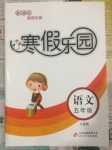题目内容
The Internet of Things (IoT) aims to get everything and everyone talking. Attaching sensors to “things”, such as cows, cars and refrigerator, and then assigning them unique IP addresses allow them to “talk” to the Internet. Of course, the IoT will involve much more than a handful of sensors. Networking company Cisco estimates that 50 billion Internet-connected devices and objects will
be sending over data by 2020.
Specific Benefits The IoT will allow people to track things and processes like never before. Airplane manufacturers will be able to continuously track the condition of airplane parts, allowing them to do preventive maintenance and avoid costly downtime. Consumers could install smart meters in their homes to monitor energy usage and observe energy price changes in real time. That would allow people to adjust their habits and use electrical appliances during lower-priced hours. |
Some Fears Some critics fear that the IoT could end up being a fashion that people lose interest in over time. Having Twitter feeds on refrigerator doors may sound cool at first, but the attraction could fade as quickly as the excitement over last year’s smartphone! Other critics are doubtful that companies making Internet-connected appliances will provide long-term software updates. If that happens, a refrigerator or washing machine that should last 10 years or more could last two or three due to software that’s outdated. |
A Positive Example Early this year, owners of the Tesla Model S electric car received a recall notice alerting them to a charger plug needing to be fixed. Amazingly, owners of the Model S sat back while the company performed an “over the air” wireless update. Customers confirmed the update by tapping on the car’s touchscreen console to see that the Model S was running the latest software version. No trip to the dealer was required! Perhaps Tesla’s remote fix is a sign of things to come. Someday soon, people’s lives might become a lot more efficient and convenient thanks to the IoT. |
1.How do researchers get everything and everyone talking?
A. By establishing the IoT and launching a handful of sensors.
B. By connecting sensors with them and appointing them unique IP addresses.
C. By communicating with them all the time through the IoT.
D. By sending people to track them day and night and collect useful data.
2.According to the article, which of the following is NOT TRUE?
A. IoT can help people do preventive maintenance and save money.
B. IoT can help people monitor energy usage and observe price changes timely.
C. IoT can help people adjust their habits and use electrical appliances more smartly.
D. IoT can help people investigate things and update a lot of important data.
3.What else do critics worry about the IoT besides its probably ending up being a fashion?
A. People will lose interest in it as quickly as the thrill over last year’s smartphone.
B. Refrigerators and washing machines will be replaced by other devices in a few years.
C. Whether related companies will provide long-term software updates or not.
D. The software provided by companies will be outdated easily and quickly.
4.According to the passage, when owners of the Tesla Model S electric received a recall notice, they ______.
A. just waited in the car while the maintenance is being done through wireless update
B. were required to go to the nearest 4s store to make some adjustments or repairs
C. could definitely depend on the IoT to send them the charger plug to be fixed
D. had to confirm the update with the help of the equipment provided by the company
 寒假乐园北京教育出版社系列答案
寒假乐园北京教育出版社系列答案
